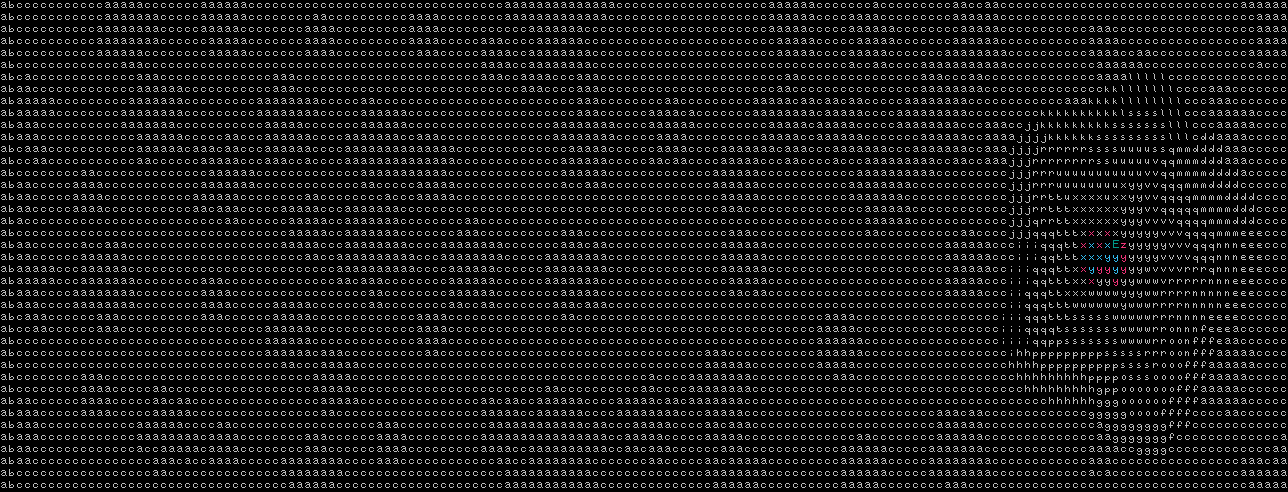On the twelfth day of advent, we do some hill-climbing.
Ironically, we don’t use a hill-climbing algorithm for this. Part A challenges us very directly to do some path-finding. Part B asks us to instead find the best starting point.
I used a pre-prepared implementation of A* for Part A, and it was more than
fast enough to brute-force Part B. (With a small additional to my World
implementation to make it easier to get a list of positions corresponding to a
given rune.)
It was only while I was working on the visualization that I realized I could
simply reverse the direction of path-finding, flip the “neighbor” rules around,
and path-find down from the end. This required tweaking A* to accept a set of
goals instead of a single goal, but that was easily done. A really good
heuristic for this would be difficult to write, but those are just a
performance improvement..
Visualization
The interesting thing about A* is that the visualization of the traversal
varies greatly based on the heuristic, even for the same outcome.
I have yet to see an Advent of Code challenge where the heuristic is truly important (it’s primarily a performance optimization); perhaps in one of those “infinite space” type of problems?
So usually, I only tune the heuristic for an interesting visual.

New Features
Aside from the improvement to A* mentioned above, I also improved the way the
Canvas GIF renderer supports variable framerates. Previously, the renderer
was provided a range of frames and the framerate to apply there. Now, each
frame has its own timing. This should make precisely-timed animations (e.g.,
multi-phase or accelerating) much easier to work on.